
30 minute read
AG James Issues Consumer Alert to Protect New Yorkers
AG James Issues Consumer Alert to Protect New Yorkers From Dangerous, Fake COVID-19 Vaccination Cards
NEW YORK: New York Attorney General Letitia James issued an alert to protect New Yorkers from the dangers of fake coronavirus disease 2019 (COVID-19) vaccination cards. The sale or distribution of blank or fraudulently-completed vaccination cards to individuals who have not actually received a vaccine poses a serious threat to the health of New York communities, and will impede the progress that has been made in combatting COVID19. Falsifying vaccine cards and records, as well as the unauthorized use of the Centers for Disease Control and Prevention (CDC) and the U.S. Department of Health and Human Services’ (HHS) seals, also violate various federal and New York state laws and is subject to civil and criminal enforcement. “As the Delta variant becomes more prominent, it is more important than ever for New Yorkers to be vaccinated against COVID-19,” said Attorney General James. “Not only do fake and fraudulently-completed vaccination cards violate federal and state laws and the public trust, but they also put the health of our communities at risk and potentially prolong this public health crisis. I strongly urge New Yorkers to reject these fake vaccination cards and get the COVID-19 vaccine, so that we can move forward from this pandemic and return to normalcy as soon as possible.” COVID-19 vaccines are now available to all New Yorkers 12 years of age and older, and must be administered free of charge. To find a New York state operated vaccination site, please visit this the state's COVID-19 vaccine tracker website. Other vaccination sites can be found online. Legitimate CDC vaccination cards are provided to individuals once they receive the COVID-19 vaccine. If an individual receives the Pfizer or Moderna vaccines — which require two doses — they will receive a vaccination card after their first dose that will be updated after the second dose. Those getting the Johnson & Johnson vaccine will receive their vaccination card after their single dose. New Yorkers are urged not to share pictures of this card online or on social media, or to at least blur out private information (date of birth, vaccination lot number, etc.). Scammers can use New Yorkers’ personal information to steal their identity, and use pictures to create fake cards. New Yorkers can access proof of a COVID-19 vaccination or a negative test result digitally on their smartphone using one of the two Excelsior Pass apps, which are available for free from the Apple App Store and the Google Play Store. Use of the Excelsior Pass apps are voluntary, and with these apps, New Yorkers can easily retrieve and store a digital form of vaccine records or negative test results and avoid misplacing or damaging their vaccination card. New Yorkers can learn more about the Excelsior Pass apps online. Relatedly, this past April, Attorney General James and a bipartisan coalition of attorneys general sent letters to a number of companies asking them to act immediately to prevent the sale of fake COVID-19 vaccination cards on their platforms. Any New Yorker that believes they have been a victim of a COVID-19 vaccination card scam should contact the Office of the Attorney General by calling 1-800-771-7755 or filing a complaint online. l
Advertisement
Editorial credit: M21Perfect / Shutterstock.com
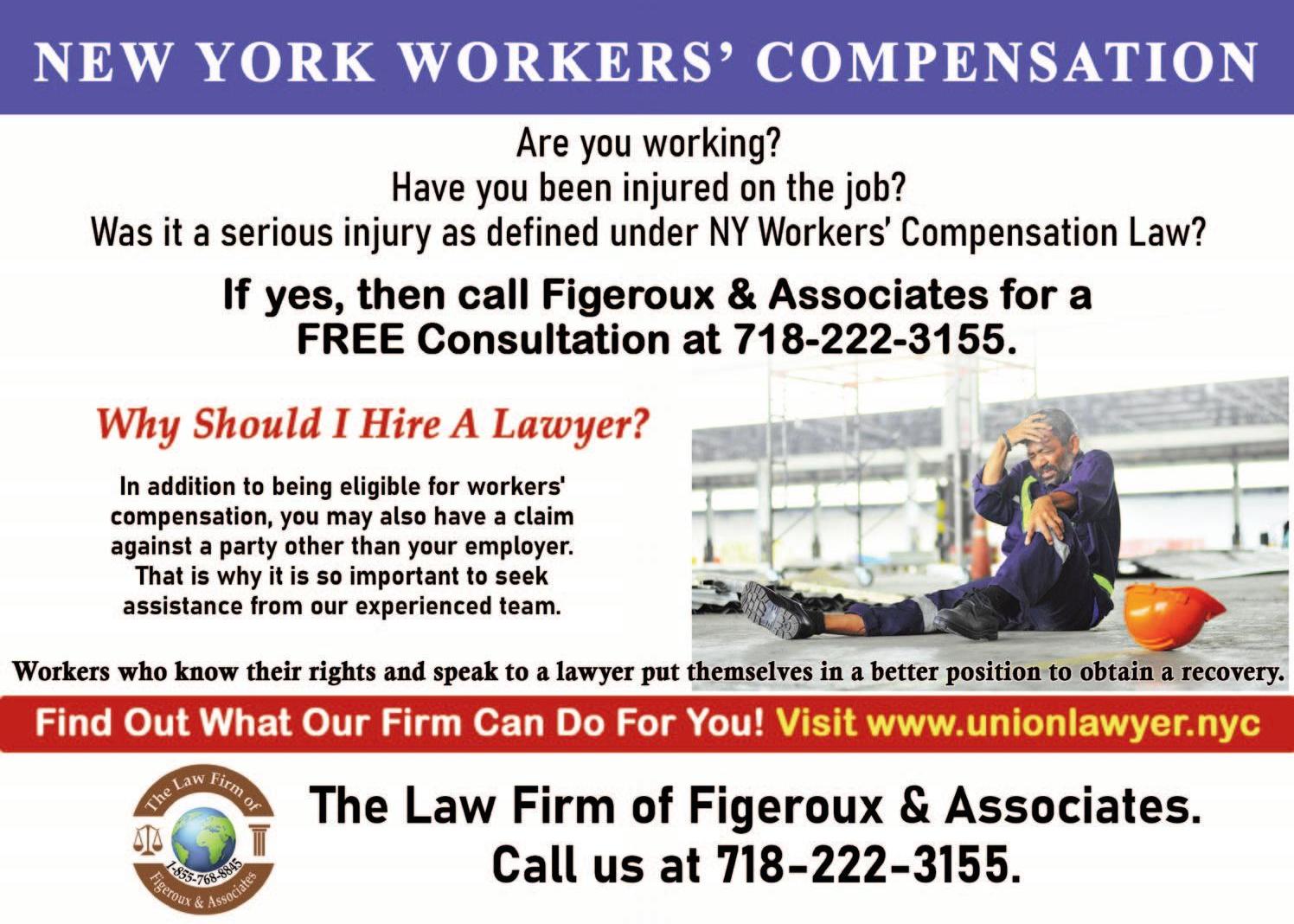
Cuomo Resigns/
continued from page 1 tant to Cuomo, Brittany Commisso, filed a criminal complaint against him with the Albany County sheriff’s office. The state Legislature readied impeachment proceedings. Then, top aide Melissa DeRosa resigned amid a flurry of questions surrounding her role in protecting Cuomo. Attorney Roberta Kaplan also resigned from the #MeToo advocacy organization Time’s Up after the attorney general’s report revealed that she helped draft a letter that denied Cuomo’s wrongdoing. As news emerged about the silence from Cuomo’s staff, who had long protected him, and his victims who feared blowback, our thoughts turned immediately to our research on harassers. “See No Evil, Hear No Evil, Speak No Evil” is the title of our new article for the Journal of Applied Psychology, which describes the role witnesses play in helping and protecting harassers. Evidence suggests that, rather than helping victims, witnesses often protect the harasser. The report on Cuomo’s sexual harassment is replete with examples that showcase how members of Cuomo’s top staff, known collectively as the “Executive Chamber,” silenced victims. One victim explained in the report: “I was terrified that if I shared what was going on that it would somehow get around … and if senior aides Stephanie Benton or Melissa DeRosa heard that, I was going to lose my job.”
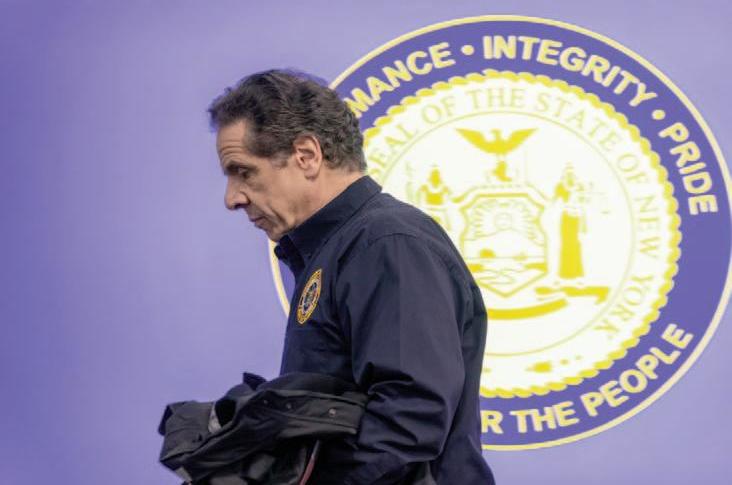
Editorial credit: lev radin / Shutterstock.com
Although #MeToo gave voice to millions of women to speak up about sexual harassment, it remains rare for victims to report sexual harassment to employers. They are afraid of blowback. They think management won’t believe them. They fear being blamed or shamed. And these fears are warranted.
Silent complicity
Research shows that reporting mechanisms rarely work and often backfire. For example, employees who speak up about workplace harassment frequently face retaliation, both personal and professional. This is evident in multiple victim accounts in the Cuomo investigation. One victim was quoted in the report saying that “she did not feel she could
IN TROUBLE WITH THE LAW?

Are you under investigation or accused of a felony or misdemeanor?
Get legal advice from the law firm you can trust: Figeroux & Associates.
We handle: nDUI (Driving Under the Influence) nCourt Order Violations nPossession of Drugs (with or without Intent to Distribute) nCrimes with Impact for Deportation with Non-Citizens nFraud nCrimes of Economics
PUT YOUR FUTURE IN OUR HANDS. WE CAN HELP. CALL NOW. 718-222-3155. Remember: The lawyer you hire, does make a difference!
safely report or rebuff the conduct because, based on her experience and discussion with others … it’s kind of known that the Governor gives the seal of approval who gets promoted and who doesn’t.” But what about bystanders? Colleagues? Leaders? Why don’t they speak up when they see sexual harassment? Part of the problem, we have found, lies with social networks – the webs of interconnections among victims, perpetrators, co-workers and managers. The way these networks are configured encourages members to be silent, silence others and not hear victims who voice concerns about sexual harassment. One of Cuomo’s 11 alleged victims, a state trooper, described a conversation she had with Cuomo while driving him to an event. The governor questioned her clothing choices, asking why she wasn’t wearing a dress. After the conversation, the victim’s state police superior, who was in the car during the interaction, messaged her, saying that the conversation “stays in the truck.”
‘Textbook example’
Why do people protect harassers? A number of factors are at play. First, a harasser can establish a central status by having many strong ties to others in the network. Strong relationships within a tie require an investment of time and resources on both sides, and in turn, they yield loyalty and reciprocity. So network members close to the harasser are more likely to stay silent about his misdeeds, and to silence or manipulate those who speak up into questioning their sanity. Also, when the harasser is the sole link between disconnected members of the network, he can isolate victims, control information and conceal wrongdoing. The result of all this: Victims, witnesses and would-be supporters stay silent. In the case of Cuomo, he had many loyal ties. The attorney general’s report states that the Executive Chamber had “an intense and overriding focus on secrecy and loyalty that meant that any and all perceived acts of ‘disloyalty,’ including criticism of the Governor [Cuomo] or his senior staff, would be met with attacks of a personal and professional nature.” The second reason people protect male sexual harassers lies in how certain network beliefs prize men and masculinity. These beliefs normalize male dominance over women, encouraging support for those who enact displays of masculine superiority. When these beliefs pervade a social network, and central men sexually harass women, network members stay silent. They also rally to defend and protect harassers by silencing and not hearing those who speak up. Because women are devalued in these networks, powerful witnesses have little motive to hear sexual harassment complaints or take action to support female victims. The investigation into Cuomo’s conduct concluded: “This culture of fear, intimidation, and retribution co-existed in the Executive Chamber with one that accepted and normalized everyday flirtations and gender-based comments by the Governor.” Finally, mythologies about sexual harassment are frequently found in social networks such as the one that surrounded Cuomo. These common myths deny that sexual harassment has happened, often by questioning women’s complaints – for example, suggesting that false allegations are common. Or they downplay the gravity of these offenses. When harassment becomes undeniable, myths lead network members to move on to justify it: absolving harassers of responsibility or blaming victims – asking what women did to invite sexual advances. Myths such as these silence network members because speaking up is likely to be futile or even dangerous. Throughout the report, senior staff members in Cuomo’s office denied wrongdoing by Cuomo. One victim, Ana Liss, testified that Cuomo had held her hand, kissed her cheek and been flirtatious. She did not want to report it because “the environment in the Executive Chamber deterred her … she was fully expecting the Governor’s team would deny, deny, deny, character assassinate.” It is rare that scholarly research and current events so perfectly reflect each other. But the Cuomo case is – no metaphor here – a textbook example of a network of complicity and silence around sexual harassment.l


HOUSING
8 Gowanus Could Become More Diverse After Rezoning, Racial Impact Study Finds
BY RACHEL HOLLIDAY SMITH THE CITY
Brooklyn’s Gowanus neighborhood would likely become more diverse and less segregated under a proposal to allow more development in the neighborhood, according to a first-ofits-kind study on the contentious rezoning’s potential racial impact. The analysis of the Gowanus Neighborhood Plan, conducted by a Columbia University professor with City Council staff, comes as the controversial proposal — previously delayed for months by a lawsuit — now makes its way through the city’s public review process. The study also offers the first glimpse at the potential value of a Council bill passed just weeks ago requiring “racial equity reports on housing and opportunity” for rezonings in the future. While that legislation will not take effect until mid-2022 and does not apply to the Gowanus plan, those backing the rezoning thought it was best to study the issue anyway. Those supporters include area Councilmembers Brad Lander and Steven Levin as well as the local housing nonprofit Fifth Avenue Committee, which helped fund the study. “If our goal is a more inclusive neighborhood, with meaningful opportunities for New Yorkers of color, then we need to find the courage to move forward thoughtfully. And I really believe this provides clarity about that,” Lander said of the new research. The Gowanus plan aims to change development rules within an 82-block area along Fourth Avenue between Atlantic Avenue and 15th Street and stretching west to Bond and Smith streets. The idea is to allow more residential construction in a neighborhood that has for decades been an industrial enclave centered on the toxic Gowanus Canal, which was designated a federal Superfund site in 2010. The “Racial Equity Report,” produced by Columbia urban planning professor Lance Freeman, concluded that the rezoning would likely cause Gowanus, currently one of the whitest neighborhoods in the five boroughs, to “much more closely match the diversity of New York City rather than the [current] population of the local area.” That’s partly because, under the zoning proposal, the neighborhood could gain as many as 2,950 housing units rented at below-market-rate prices through the city’s affordable housing lottery, out of a total 8,495 newly constructed apartments. All but 380 of the lottery units will be set aside for households making no more than 80% of the area median income, which comes to $85,920 for a family of three. The researchers analyzed the demographics of households eligible for those apartments as well as the racial makeup of previous affordable housing lotteries in majority white neighborhoods using data from an ongoing lawsuit over city policy to give “community preference” to lottery applicants already living in a neighborhood where new affordable housing is to be built. Taking that all into account, the report estimates that 20% to 25% of the new lottery apartments under the rezoning would be rented by Black households, and 25% to 37% of them will be rented by Hispanic households The neighborhood is currently one of only 10 districts in the city with more than 60% white residents. Because of that, the report’s authors recommended the city give preference for the lottery to “more diverse community districts” beyond just Gowanus,” they said.
‘Low’ Displacement Risk Touted
Even with the new market-rate apartments, the report found, the neighborhood is set to become more diverse as measured by the “dissimilarity index,” a measure of segregation that quantifies the distribution of people by race. “For all nonwhite groups, but especially Blacks and Latinos, residential segregation from whites will decrease,” the report said. Gowanus is also a place where prices have risen so much already in the past 15 years or so, there are few lower-income tenants to push out. Many low-income families who remain in the area live in “protected” housing, such as rent-stabilized apartments and public housing. “The risk of displacement by rising market-rate rents for Black and Latino families in the area is low,” the report found. “This is now a majority white, upperincome community,” said Michelle de la Uz, executive director of the Fifth Avenue Committee, which is part of the development team for a 100% affordable housing complex, Gowanus Green, included in the rezoning plan. “It wasn’t a number of years ago when I moved into the area, but it is now.” Freeman of Columbia, who led the research, hopes the next administration sees the report “as a template” for New York’s big zoning projects in the future — especially because the city remains among the most segregated places in the country, he said. “It is important to consider racial equity when undertaking these types of large land use projects,” he said. “Simply taking a race-neutral neutral approach is not always sufficient.”
Long-Due Analysis
Housing advocates have for years been pushing the type of analysis in the Gowanus report, and the mindset behind it could lead to big change in the way New York expands. “That we are now, front and center, talking about race as tied to rezonings and what their impacts are — and how we should be considering the racial impacts in a rezoning — is, in and of itself, a huge shift,” said Barika Williams of the housing advocacy group Association for Neighborhood & Housing Development. continued on page 9
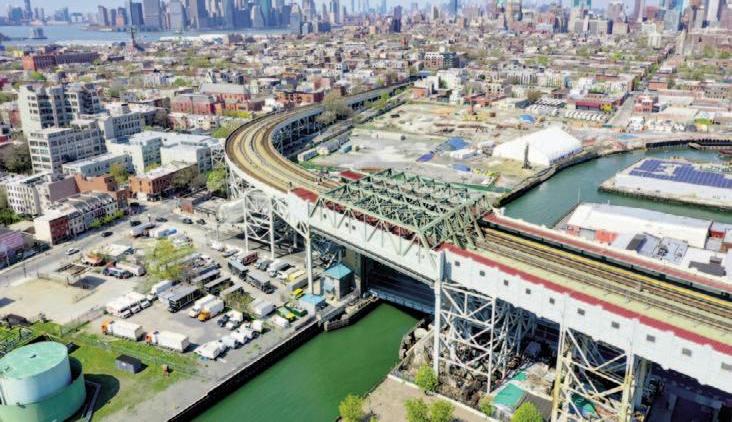
Panoramic view of the Gowanus Canal in Brooklyn with the Gowanus Expressway and Manhattan in the background. Editorial credit: Felix Lipov / Shutterstock.com

Gowanus/
continued from page 8
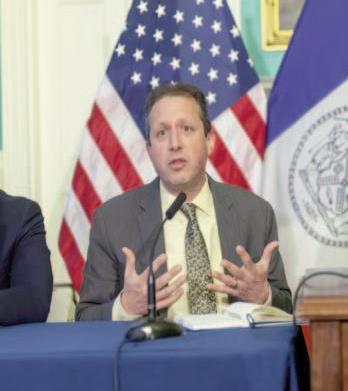
NYC Councilmember Brad Lander Editorial credit: rblfmr / Shutterstock.com
The change follows years of protests over rezonings that looked very different from the one in majority-white and wealthy Gowanus — an outlier in the recent history of neighborhood land use proposals. Under the de Blasio administration, all neighborhood-wide rezonings have taken place in “low-income communities of color,” said Lander — East New York, Far Rockaway, East Harlem, Inwood and the Jerome Avenue corridor in The Bronx. Before that, similar actions were taken during the Bloomberg years, including along Fourth Avenue in Park Slope, adjacent to the Gowanus rezoning area of today. At the time, Lander led the Fifth Avenue Committee, a community development corporation founded in 1978. He said he remembers asking city officials, “If we want to keep this a diverse neighborhood, where are we doing that?” “The answer was ‘nowhere.’ We didn’t do it anywhere. And there was no study and relatively little conversation,” said Lander, now the Democratic candidate for city comptroller. More recently, locals in Manhattan’s Inwood asked similar questions during that neighborhood’s controversial rezoning process held between 2015 and 2018. Cheryl Pahaham, an Inwood resident and member of local coalition Inwood Legal Action, said people were losing leases, being harassed by landlords or dealing with huge price increases. Black and Dominican families were hardest hit, she said. “The displacement was happening, and we were afraid it would accelerate,” she said. Pahaham and others asked city officials to look at the rezoning’s potential impact on housing for locals of different races. But “the city just ignored it,” she said. “They said they didn’t have to.” Since then, Inwood Legal Action has been part of a coalition — which included Public Advocate Jumaane Williams as a major backer — pushing to pass the recent City Council bill. Pahaham does not consider the Gowanus report perfect. She is concerned with its conclusions about the rezoning’s potential impacts on local industrial jobs — displacing businesses that often employ Black and Latino people at higher rates than whites — and questions whether future affordable housing will realistically go to Black and Latino households given that higherincome tenants have better chances of winning the housing lottery. Still, she called it a report “done with integrity” and a good first step — that would have been very useful to her own community as they tried to negotiate with the city during their rezoning. “It would have leveled the playing field. We would have had more honest conversations with our Councilman. And we could have together advocated for more deeply affordable housing,” she said.
Next Steps
The Gowanus report has come late in the rezoning process, which has been in the works for years and has already begun the formal Uniform Land Use Review Procedure, or ULURP, necessary to get a final green light. Critics have questioned the environmental safety of the plan, particularly the Gowanus Green project, which will be built on a cleaned-up contaminated site once home to a gas plant. They have also called for more units of affordable housing, as well as apartments available to even lower-income families, and pushed for the plan to address $274 million in needed repairs and maintenance at Gowanus’ two public housing complexes. Some of those concerns appeared in a resolution from the Gowanus community board, which approved the land use changes with conditions under ULURP in June. Next, mayoral hopeful Borough President Eric Adams must weigh in with an advisory opinion on the rezoning. Then it will go to the City Planning Commission, City Council and mayor for final approval. The Gowanus rezoning and a similar effort to rezone SoHo — also a majority white neighborhood — are major pieces of de Blasio’s final attempt to cement his legacy on land use rules and housing. As the process moves forward in Brooklyn, the report’s authors make a series of recommendations to “further advance racial equity” — a step beyond what would be required from racial equity reports under the City Council bill enacted recently. The study calls for more efforts to preserve and maintain Gowanus’ public housing complexes, lowering income levels on future affordable housing and investing more in workforce development services to make up for industrial and auto-related jobs the rezoning will likely displace. De la Uz of the Fifth Avenue Committee believes there is still time to take those recommendations and “be more rigorous in what we request and demand of government” — especially on behalf of people who don’t yet live in Gowanus, but could. “Future people who are going to benefit from the affordable housing are often not a part of the conversation,” she said. “I’m hoping the report literally brings those folks to mind.”l This story was published on August 8, 2021 by THE CITY.
DON’T LET SOMEONE STEAL YOUR HOME.
Criminals prey on unsuspecting homeowners to illegally transfer property deeds.
Anyone can be a victim. Be on the lookout: check the status of your property with the NYC Department of Finance and sign up for alerts on any changes to your property documents.
Act now to check your deed! Visit www.nyc.gov/deedfraud or call 311 for more information.
Back-to-School is on the Horizon, So Plan Ahead: Get Vaccinated by Aug 9
BY MEISHA PORTER AND DR. DAVE A. CHOKSHI
In early July, we were elated to welcome students to classrooms for Summer Rising, the City’s free summer academic and enrichment program. Children were clearly excited to be back with their teachers and friends, and those feelings have only grown over the past few weeks. In an elementary school in East Harlem, youngsters proudly displayed the solar-powered ovens they’d built to cook s’mores. In a school in Chinatown, students gasped with joy over the “magical” science experiments performed by Jason Latimer of YouTube’s Impossible Science channel. And in a school in the Bronx, students dove into their lessons and demonstrated an outdoor mindfulness activity. Experiences like these are reflected in the smiles of hundreds of thousands of children who are in school to learn, play, connect, and grow this summer. Both children and their parents are grateful to have this bridge to the next school year. We see the first day of school—Monday, September 13—as a homecoming. In fact, it comes shortly after NYC Homecoming Week, a five-borough celebration of the city’s resilience throughout the COVID-19 pandemic. As we think ahead to the fall, the health and safety of students and school communities are at the forefront of our planning. We are asking New Yorkers to help with a crucial part of this work: get vaccinated. If your child is between 12 and 17 years old, August 9 is the last day for your child to get the Pfizer vaccine in order to be fully vaccinated in time for school. This date is important to remember because the vaccine for adolescents involves a two-dose regimen, and it takes two weeks from the second shot for someone to be considered fully vaccinated. So, think of this as your doctor’s orders: Schedule your vaccine today if you have not already. Safely and fully reopening schools this fall is a milestone for our city, and we are eager to see students back in their school communities. We are doing everything in our power to create a safe learning environment—from disinfecting every school, to re-configuring classrooms and improving ventilation, to stocking up on
Chancellor Porter Photo: NYC DOE
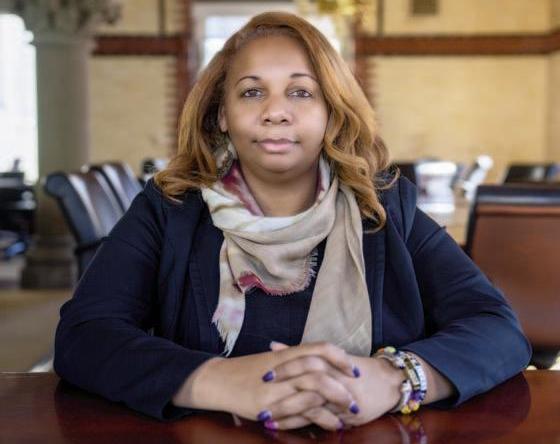


Looking to make extra cash? A side hustle?
We are looking for persons to sell advertisements. Experience in advertsing sales is needed and preferably experience or sincere interest in marketing. Interested? Send your resume to
Dr Chokski Photo: NYC DHMH
face masks and hand sanitizer. And last week, Mayor de Blasio announced that school staff must show a one-time proof of vaccination or weekly COVID-19 tests. The new requirement recognizes that the single most important way we can help our children go back to learning, and save lives, is with vaccination. As parents ourselves, we know the decision to vaccinate is important, and we would do anything to protect our children. The vaccine is safe and very effective. Over 250,000 young New Yorkers have now gotten the shot. At school, vaccination allows children to be in the classroom, participate in afterschool activities and sports, and gather with friends—safely. It also provides a more stable learning environment, (for example, students who are considered fully vaccinated are not required to quarantine). Getting the shot has never been easier in New York City. Access to vaccination is widely available in all five boroughs, and the City is offering a new $100 incentive for anyone (including children) who gets their first dose at a City-run site. Nearly all New Yorkers live within half a mile of a public vaccination site, and everyone is eligible to request and receive at-home vaccination. Pediatricians and other health care providers can also help answer questions, and many are able to give the COVID-19 vaccine at a back-to-school check-up, along with other routine immunizations. If you need a provider, call 1-844-NYC4NYC and you will be transferred. We’re so excited to welcome all New York City students back into classrooms in September. Because of vaccination, our buildings will soon be fully open and our young people will be learning. We deeply appreciate the partnership of the city’s families and the commitment to keeping our school communities safe and healthy. l Meisha Porter is Chancellor of the NYC Department of Education
FAMILY MATTERS Four Reasons to Hire a Divorce Attorney When Separating from Your Spouse
BY MARY CAMPBELL
According to Wikipedia: Divorce, also known as dissolution of marriage, is the process of terminating a marriage or marital union. Divorce usually entails the canceling or reorganizing of the legal duties and responsibilities of marriage, thus dissolving the bonds of matrimony between a married couple under the rule of law of the particular country or state. Divorce laws vary considerably around the world, but in most countries, divorce requires the sanction of a court or other authority in a legal process, which may involve issues of distribution of property, child custody, alimony (spousal support), child visitation/access, parenting time, child support, and division of debt. A divorce will certainly take an emotional toll on you. After all, separating from your partner is never easy. However, if you do not have adequate legal representation, it can also take a financial toll on you.
A Messy Affair
If the marriage was short, then you and your partner will likely find it relatively simple to separate. On the other hand, if there are assets and children involved, you will need an experienced legal hand to guide and protect you along the way.
Four Reasons Why You Need a Divorce Lawyer
There are four main practical reasons why you might need a divorce lawyer:
1. Legal Knowledge
A divorce attorney's knowledge and familiarity with the law will allow them to present your case to a judge in the best way possible. The lawyer will know exactly which legal buttons to push and tilt the divorce petition in your favor — especially if your spouse has hired legal help too.
2. Paperwork
Divorce proceedings involve filing paperwork — lots and lots of it. A lawyer and their team can take care of that obligation for you without breaking a sweat. Your legal team will be able to ensure that all your documentation is completed accurately and on time. After all, the last thing you want to do is miss a deadline and irritate the judge.
3. Objectivity
When you are going through a tricky divorce, it can be extremely easy to get caught up in the idea that you must win every battle. However, this is quite unlikely. An experienced attorney will be able to take a more objective look at your case and determine which fights can be won and which ones should be settled. This can help to prevent you from getting dragged into unnecessary legal battles that you have no hope of succeeding in.

4. Negotiation
At its heart, every divorce is just a complicated negotiation. As such, your best chance of protecting yourself financially during a divorce is by hiring a skilled negotiator. Since your divorce attorney has likely handled hundreds or even thousands of similar cases throughout their career, they will be able to negotiate the best possible outcome on your behalf.
In Closing
Going through a divorce is challenging on a number of different levels. However, by hiring a skilled and experienced divorce attorney, you can at least ensure that your finances remain protected throughout the process.l
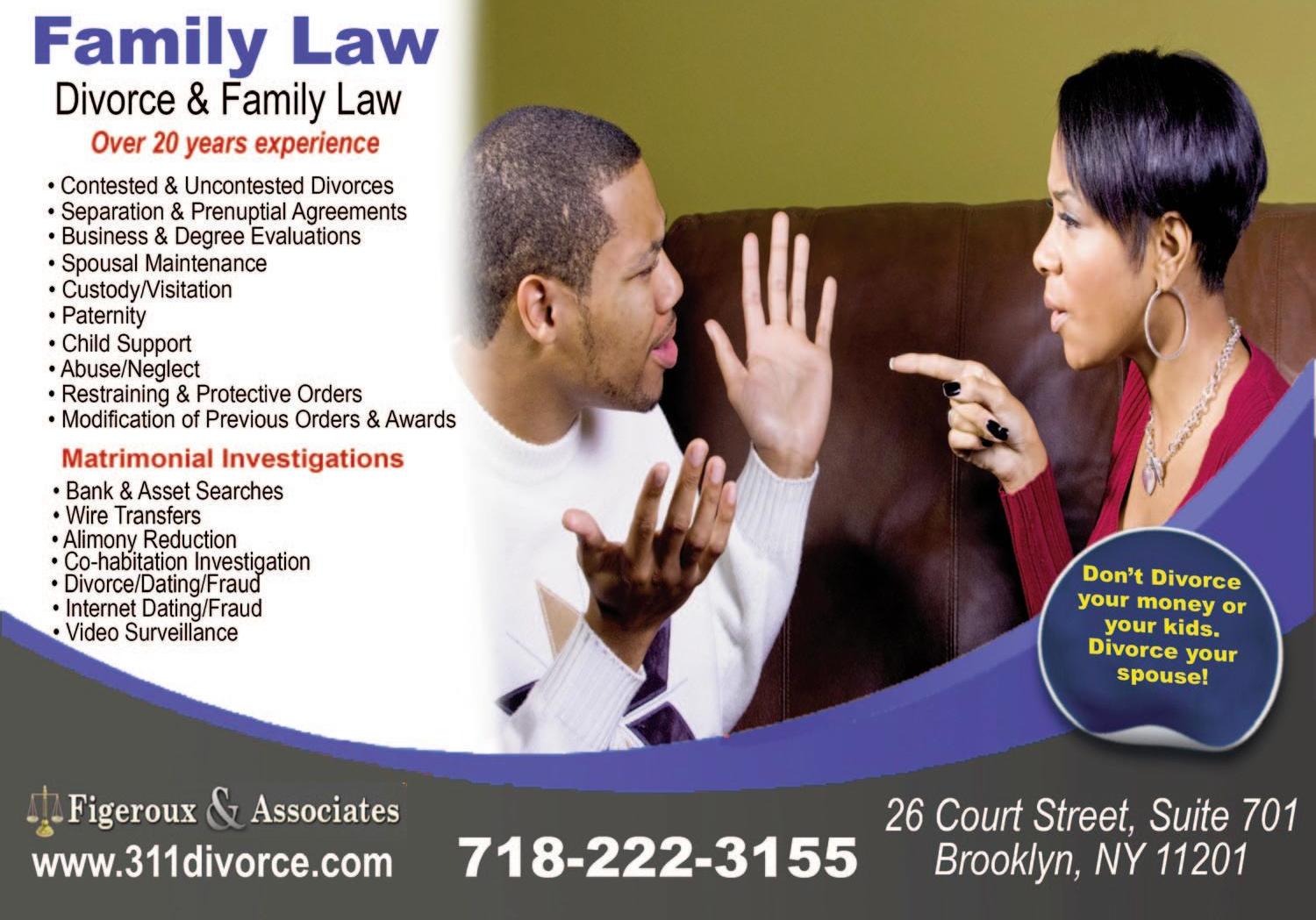
Road to Citizenship/
continued from page 8
The National TPS Alliance came to the city last week to rally the roughly 25,000 New Yorkers who benefit from Temporary Protected Status, a federal program that allows some immigrants to work and live in the United States as their home countries recover from natural disasters or political crises — and sometimes both. Now, the National TPS Alliance hopes to recruit immigrants and advocates in New York to put pressure on a very powerful local politician: Senate Majority Leader Chuck Schumer, a longtime TPS supporter who had assured them in April he’d make sure a path to permanent residency was on the horizon. “It’s important that politicians, members of Congress, and New York senators realize that we understand their work, that we understand the responsibility that they have to us,” Oscar Rodriguez, a 48-yearold TPS holder and head of the new local chapter of the Alliance, told THE CITY. Born in Honduras, Rodriguez has lived in the city for 25 years, most of that time in Kew Gardens, Queens. He works as a truck driver — and was one of an estimated 12,500 essential-worker TPS holders in the city who toiled through the pandemic. Now, he is putting what little free time he has towards heading up the new New York City chapter in a push to enlist Schumer’s help in the battle for citizenship. “We pay taxes so that [elected officials] can have the jobs they have. It sounds intense if we say it like that, but it’s true,” said Rodriguez. “We understand that power comes from the people, the vote. And we chose [these politicians] so they would fight for our rights, not to kick us out of the country. They must realize that TPS-holders have children that vote.”
New Hope
As previously reported by THE CITY, many New Yorkers with temporary legal status have expressed renewed optimism, given the Biden administration’s early promise to provide them permanent residency and a clear path to citizenship. Soon, even more TPS-holders from Haiti will benefit after the program was expanded for the residents of the Caribbean country last week following intense advocacy. National TPS Alliance committee members were banking on that hope to reel in fellow TPS holders to join the fight for permanent residency as they spent last week door-knocking and handing out flyers, in English, Spanish and Haitian Creole across the city. At an event held Saturday afternoon in Flushing Meadows-Corona Park, their canvassing was rewarded with a small but steady stream of people looking to help. Some were drawn over by the giant blue flag being waved by Jose Palma, a NTPSA coordinator from Massachusetts. “I know that many of us are tired,” Palma yelled to the crowd. “Let’s fight these next months because we are close.” One woman who came to join the fight was Evelyn Zavala, a single mother from Central Islip, L.I. She arrived in New York 20 years ago hoping to keep her sons from falling “prey to the gangs” in El Salvador. “It’s unfair that she has to be advocating to stay here, we should be allowed to stay here,” her 13-year-old son, Ismael, told THE CITY. “She hasn’t committed any crimes, she’s not a criminal, she’s a hard worker. She should be able to stay here not having the fear of getting deported.” The recent moves in Washington are only the latest in a decades-long rollercoaster of uncertainty for many TPS holders. TPS recipients who hail from El Salvador, Honduras, Haiti and other countries must wait every few months to find out if the program has been renewed — a cycle that has repeated in some cases for over 20 years. For many TPS holders like Zavala, that represents the majority of their adult life. Some parents’ last option is to wait until their U.S.-born children turn 21 and can petition for residency for them. “It is a psychological problem that our children are being put through,” said Palma. “Not being able to be enjoying their day to day, enjoying their life and developing normally, but rather being anxious to reach an older age to be able to help their parents.”
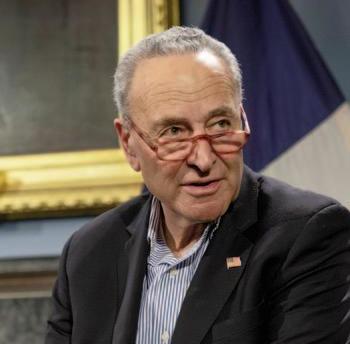
Relying on D.C.
Since the beginning of his term, Biden has made no unilateral moves toward immigration reform. Instead, TPS holders’ hope and advocacy have hung on a bill introduced earlier this year that would ensure residency for so-called Dreamers — DACA recipients who came to the country as children — and TPS recipients, as well as immigrants with so-called Deferred Enforced Departure status. That bill, the American Dream and Promise Act passed through the House of Representatives in March, but has so-far stalled in the Senate. So, too, were TPS holders’ hopes stalled until last week when Biden finally spoke out publicly to support a citizenship pathway — not through an overhaul bill, but in the budget package. “I think we should include in the reconciliation bill the immigration proposal,” he told reporters after a meeting with the Congressional Hispanic Caucus. Soon after, Schumer and Senate Democrats took action to include immigration reform in the budget package — albeit with no promise to any particular immigrant group. Now, advocates are scrambling to hold Schumer to promises he’s made to the immigrant community, like when he called on the Senate to pass the American Dream and Promise Act for both DACA and TPS holders in June. The memo Senate Democrats released on Monday describing what should be in the budget reconciliation package doesn’t mention TPS or Dreamers — and only uses the word “immigrants” once, where it says the Judiciary Committee wants to create “Lawful permanent status for qualified immigrants.” In response to questions regarding whether the majority leader supports TPS holders’ inclusion in the bill, a spokesperson with Schumer’s office told THE CITY the senator is a “longtime supporter of TPS and believes in the program.” But the spokesperson would not comment on specifics of the bill, which remains in negotiations, or a clearer path to citizenship.
Advocates Want More Than Just Belief
“We hope that it’s not just words here, that we can have him actually deliver on the promise,” Erik Villalobos, communications director for the National TPS Alliance, told THE CITY. “We’re in New York, and there’s a responsibility for the community here in New York to push Schumer as much as we can.“
Looking for Star Power
One way that Villalobos’ organization hopes to apply pressure is by focusing on the high-profile Rep. Alexandria OcasioCortez’s constituency in Queens and The Bronx. At a Monday news conference, members of the Alliance’s nascent New York committee stood shoulder to shoulder with national members. Rodriguez and others called on Ocasio-Cortez to support their efforts and join them in a march on Washington in September, when Congress is aiming to vote on the budget package. A spokesperson for Ocasio-Cortez, Lauren Hitt, told THE CITY that “the congresswoman does support a path to citizenship for TPS holders being included in reconciliation.” Hitt added that Ocasio-Cortez has held multiple meetings with local advocates in Queens and The Bronx, including one in just the last two weeks. Hitt did not specify the organizations, or respond to questions about the September march. For Rodriguez, a path to citizenship would mean that he could finally buy a house without the worries of deportation, and gain stability for his mixed-status family who depend on him financially. He also hopes his son, a DACA recipient, would also benefit from the bill. “I always use the example of Rosa Parks, who is an icon, a symbol of human rights and for her community as well,” he said. “I want us to be strong, to be one voice and must be listened to, to make it known that we are here. That we are going to fight for the rights owed to us.” He added, “We want our families to sleep peacefully.”l This story was published on August 9, 2021 by THE CITY.
GREEN CARD SLAVERY?

Don’t put up with ABUSE anymore! Whether married or not, whether your spouse is a U.S. citizen or Green Card Holder, we can get a Green Card for you and your children PLUS a divorce. Call 718-222-3155 now for a FREE consultation!
US Senator Chuck Schumer Editorial credit: lev radin / Shutterstock.com




